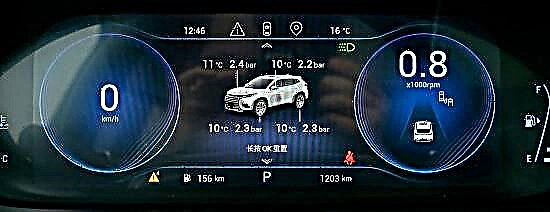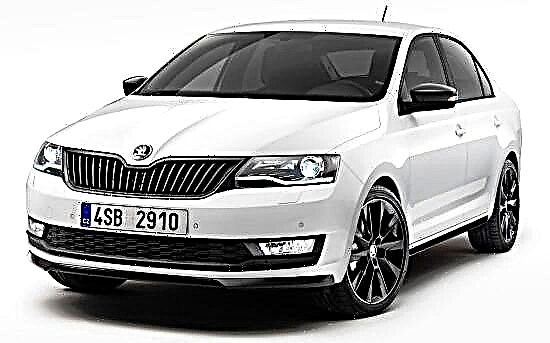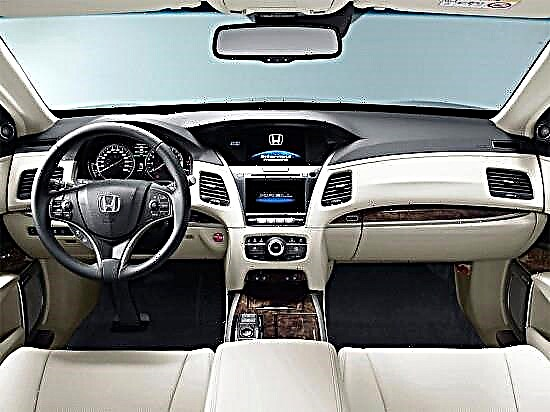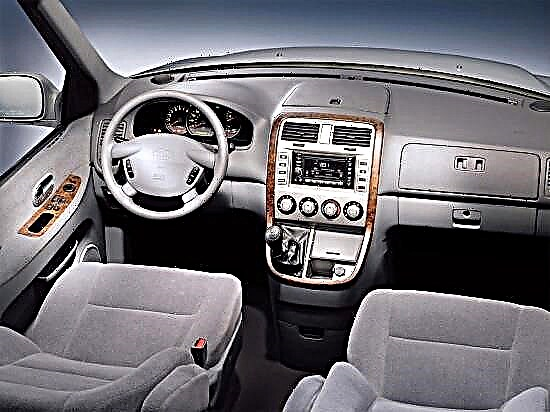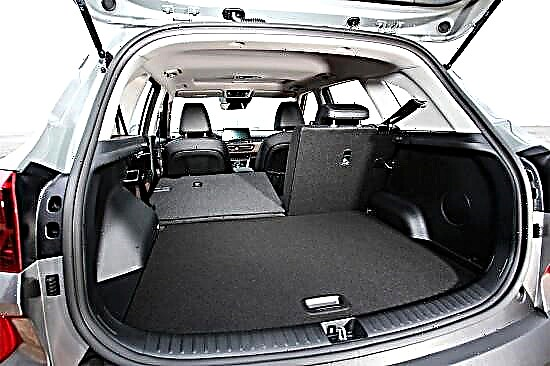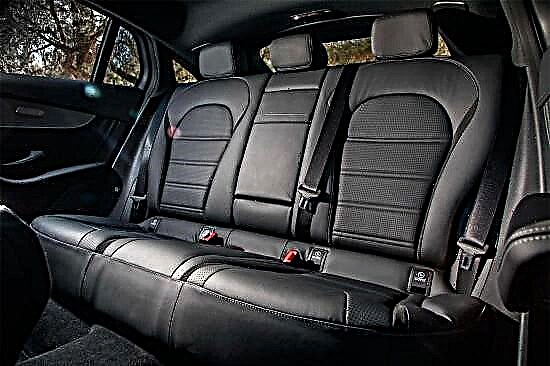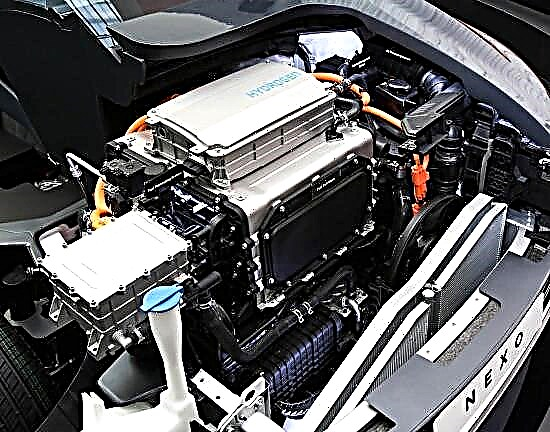The Hyundai NEXO is a second-generation, front-wheel drive, mid-size, fuel-cell electric SUV that (in the words of the South Korean manufacturer) “embodies the pinnacle of modern developments in the field of alternative fuels” ... It is a car that combines striking design, progressive technology and good ride »Performance that can be operated even in extreme environments and at extreme temperatures ...
The global debut of Hyundai NEXO took place on January 9, 2018 at the Consumer Electronics Show (CES-2018), held in Las Vegas - with its appearance, the crossover is intended to take the place of Hyundai's technological flagship.
However, before this event, the five-door had time to travel around several car exhibitions: at the end of August 2017, the pre-production car was presented at the motor show in Seoul, and in March of the same year, its conceptual prototype, called the FE Fuel Cell Concept, was demonstrated at an exhibition in Geneva.

Outside, Hyundai NEXO attracts attention with its elegant, effective and modern appearance, in which there are a lot of interesting design solutions.
From the front, the car flaunts two-story lighting equipment, an original radiator grill with an unusual pattern and a sculpted bumper, and from the rear it boasts sophisticated LED lights and a neatly cut bumper.
In profile, the SUV exhibits a balanced and athletic profile, piqued by a sloping roofline, a wavy sill line, blackened pillars at the bottom for a floating roof effect, and recessed door handles (for better aerodynamics).

It is a mid-size crossover that stretches 4670 mm in length, and measures 1860 mm and 1630 mm in width and height, respectively. There is a 2790 mm base between the wheelsets of the five-door. And the clearance of this "hydrogen car" is ~ 140 mm.

Inside Hyundai NEXO instantly reveals its "unusual essence" - the interior of the car looks elegant, progressive and quite presentable. At the direct disposal of the driver are an original two-spoke steering wheel with control elements and a completely "painted" instrument cluster.
The front panel is topped by a large display of the infotainment complex, under which a sloping center console is "registered" with a scattering of buttons and controls that control "music", air conditioning and other auxiliary functions.
In addition to this, the crossover "flaunts" high-quality performance, and some of its trim panels are made from recycled materials.

The interior of the hydrogen car is designed to accommodate the driver and his four companions, with ergonomically profiled seats in both rows and an ample supply of vital space.
With the practicality of the five-door, everything is fine - the trunk capacity is 461 liters (according to the VDA standard).

The Hyundai NEXO is powered by a traction electric motor that develops 163 horsepower (120 kW) and 395 Nm of torque, which is jumpered with a single-speed transmission and front axle drive wheels.
The engine is powered by a 95 kW fuel cell stack and 40 kW lithium-ion traction batteries.

The SUV accelerates from a standstill to 100 km / h after 9.5 seconds, and at one refueling (in a relatively realistic American cycle) it is able to cover 600 km (according to the European NEDC methodology - even 800 km).
The crossover uses three identical cylinders made on a composite basis and containing 6.35 kg of hydrogen, the full filling of which takes only five minutes.
Hyundai NEXO is based on a completely new front-wheel drive "bogie", which does not repeat any of the existing models, with a monocoque body, which is made with the widest use of high-strength steel grades.
"In a circle" on the SUV, independent suspensions with anti-roll bars are installed: in the front - like McPherson, in the back - multi-link architecture.
The car is equipped with an electric power amplifier built into the rack and pinion steering gear and disc brakes on all wheels (front ones - ventilated) with ABS, EBD and other "chips".
As befits an innovative flagship, Hyundai NEXO boasts a range of state-of-the-art electronic systems (some of which were first used on production vehicles):
- One of them is BVM (Blind-spot View Monitor) monitoring of blind spots: when changing lanes in both directions, pictures from wide-angle rear-view cameras (installed in the stern and side mirrors) are added to the image and broadcast to the dashboard.
- No less interesting is the steering function LFA (Lane Following Assist) - at a speed of 0 to 145 km / h, it automatically affects the steering, thereby keeping the car in the center of the occupied lane. Moreover, this technology is capable of working both on the highway and in urban environments.
- Introduced on the crossover and the remote parking assistant RSPA (Remote Smart Parking Assist) - it provides the ability to perform autonomous parking or exit from a parking space without a driver in the cabin.
In the South Korean market, Hyundai NEXO, as of 2018, is presented in two equipment options - "Modern" and "Premium".
- For the basic configuration of an SUV, dealers ask for a minimum of 68.9 million won (~ 3.8 million rubles), and it can boast: six airbags, ABS, EBD, ESC, 17-inch alloy wheels, LED optics, a multimedia complex with a 12.3-inch screen, virtual instrument cluster, heated all seats, ventilation and electric front seats, electric "handbrake", an audio system with six speakers and a two-zone "climate". In addition, the five-door is equipped with: adaptive "cruise", monitoring of blind spots, collision avoidance system and other modern "chips".
- The "top" version costs from 72,200,000 won (~ 4 million rubles), and its features are: a panoramic roof, light-alloy "rollers" measuring 19 inches, automatic parking technology, premium "music" with eight speakers, wireless charging for smartphones and other equipment.


